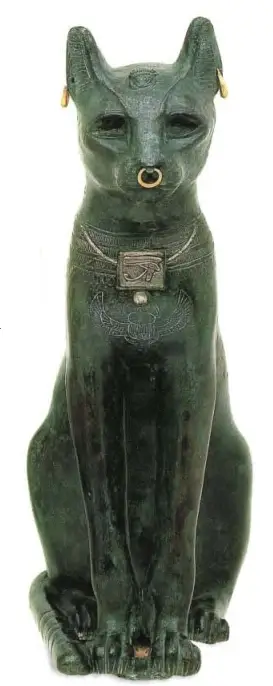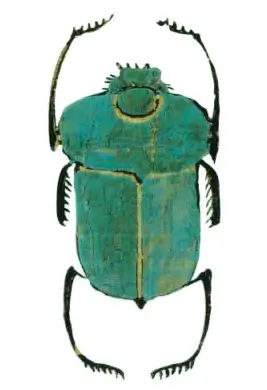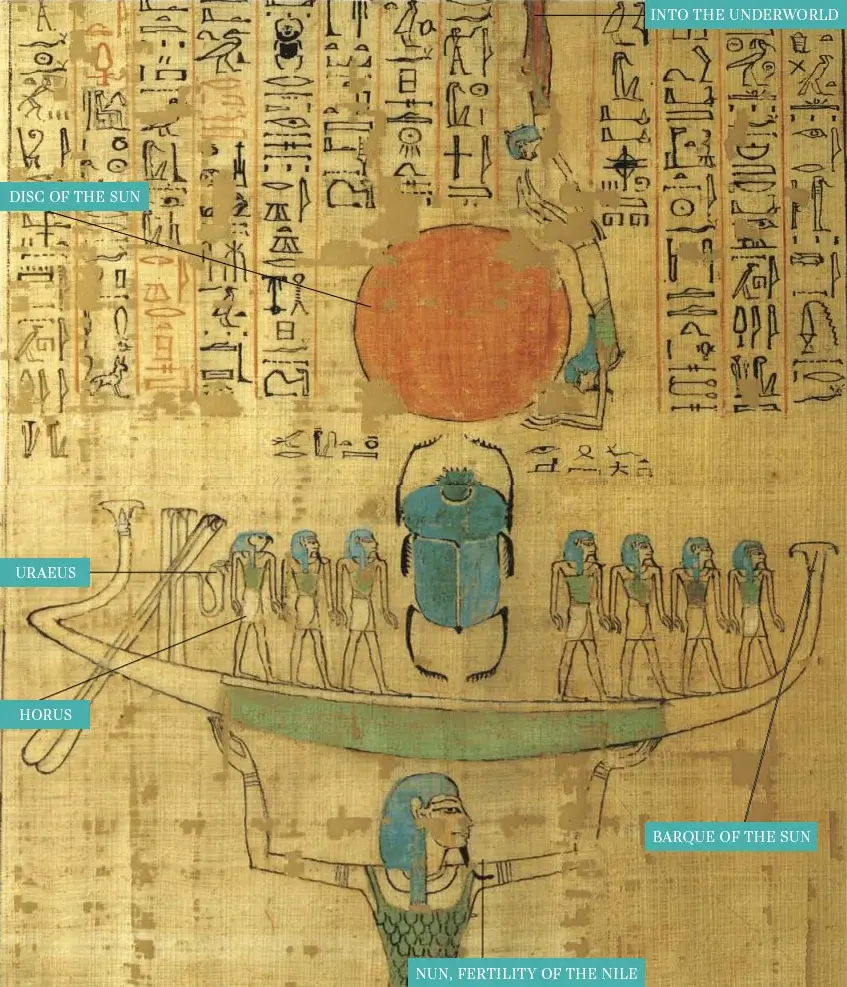Re The Sun God of Ancient Egypt
Re, the Sun God of Ancient Egypt, was the most important of all the Egyptian gods. He was a strong symbol of power, fertility, and immortality to the ancient Egyptians who worshiped him as one of their greatest gods. This guide explores Re’s origins and history, his importance to the people he ruled over, and his rich symbolism in both art and mythology. Furthermore, because he was seen as being the source of sunlight and warmth that ensured crops would grow and prosperity would spread, he was highly revered as one of the most powerful symbols of order in the universe. Follow along to learn more about Re, The Sun God of Ancient Egypt: Power, Myth, and Symbolism
Re, the sun god, appeared in three main forms: Khepri, the scarab beetle, who represented the sunrise; Ra, the midday sun; and Khepri, the setting sun. Re, the disk of the sun, who was midday; and Atum, a mature man leaning on a cane, who was the setting sun. Each evening, as the sun fell to the farthest horizon in the west, the sky goddess, Nut, swallowed it, whereupon the sun god commenced his nightly journey of turmoil in his night barque (boat). As for Re, during his journey across the heavens, he had to face Apophis, the demon of disorder who, according to myth, was also born from the same chaotic nothingness as the god himself. In the hours before dawn, when he had scarcely been seen, Apophis staged his most desperate attack.
Every night, Re in the form of a cat would cut off the snake’s head before being born once again in the east at dawn from Nut, the universal mother. Then, Re would rise and travel across the sky until the following twilight, when Apophis would lie in wait once more. It was believed that if Apophis were to kill Re, the sun would not rise and thus the day and night cycle, along with the cycle of death and rebirth, came to symbolize the life cycle of humankind and the belief that the dead would, after their death, hope to find a new birth. Originally the Egyptian faith had a visible god of the sun, Re, and an invisible god of the hidden, Amun, and Amun-Re.
Bastet

Once humans began to conspire against the ancient Re, he transformed the goddess Hathor (the sacred cow of fertility) into a fearsome lioness, Sekhmet. She drank blood and went on a murderous rampage, unleashing a plethora of curses that corrupted the planet. The ancient Egyptian goddess, who could only be satisfied by drink, gradually became respected in a kinder, more adoring way as the cat goddess Bastet. Inhabitants associated her with felines and as part of religious rituals had cats mummified. Girls might have been given the nickname kitten, but in Egypt, cats were also trained for the hunt. Their depictions in Egyptian art show them retrieving birds who have fallen from their master’s sticks. The Greeks associated Bastet with Artemis, goddess of the hunt, and Herodotus described her annual festival as an orgy.
Company of Gods
As you may already know, Re, assisted by seven other gods, proceeds on his journey under the guidance of Horus. It is difficult to be sure about the other gods. They include the three earliest created gods – Sia (perception), Hu (utterance), and Hike (magic) – as well as the gods Shu, Geb, Osiris, Horus, and Thoth. Some of the funerary boats also have goddesses on them, but Hathor is especially common.
Scarab Beetle

Scarab beetles, or dung beetles, symbolize the god Re as Khepri, the Egyptian god of the rising sun. Scarab beetles are not beetles, but an Egyptian deity symbolizing the sun, often depicted rolling across a ball of dung. Dung was also used as a symbol of creation and new life because the youngsters hatched from the balls of it.
Re’s Secret Name
Re also had several secret names. His secret name as a serpent was Amset or The Hidden One. In many illustrations he is shown with a serpent headdress on his forehead. He also had a secret name as an ape known as Khepri which means Coming Forth by Day. His secret name in human form was known as Atum-Re. To avoid conflict when referring to Re in writing it is important to clarify which one is being discussed because they all mean different things. If Re’s name is not specified then it can be assumed that Re’s secret name (Atum-Re) is being referenced. When discussing Re’s mythological aspects only his secret name should be used. If Re’s role as a god of creation and solar aspect are being discussed then only his public names should be used. It can get confusing but hopefully knowing how to specify which Re you are talking about will help clear up any confusion that might arise from using multiple names for him at once.
Re’s Animal Symbols
Re had three animal symbols associated with him during his reign over ancient Egypt. First there was Apis, a bull who represented strength and virility in males. Next there was Mnevis, a white bull who represented purity and renewal. Finally there was Menat, Re’s sacred cobra which represented rebirth into eternity through destruction and resurrection through death. These animals each played an important part in ancient Egyptian mythology so understanding them helps shed light on why these symbols were chosen to represent Re as well as their importance within Egyptian culture overall.

Disc of the sun
Usually Re, the sun god, is pictured in the form of the disc of the sun. Re is one of three parts of the god known as Atum-Re. Besides the Egyptian culture, Re can be seen in other cultures as well; he is most commonly associated with his solar aspect. Egyptian mythology says that Re has had many wives, such as Nut (goddess), Hathor (goddess), Tefnut (goddess), Isis (goddess) and Nepthys (goddess), and has many children, including Osiris (god), Horus (god) and Set (god). A common depiction of him showed him wearing a crown or horns, sitting on a throne with his feet in water representing life-giving energy from the sun.
Into the underworld
Here, the sky goddess Nut raises Osiris, the son of Geb and Nut and ruler of the underworld, to receive the sun disc before it goes on its treacherous journey. In the deepest part of the night, Osiris and Re become one, and are both described as Re who rests in Osiris and Osiris who rests in Re.
Uraeus
The cobra in the Middle East is a symbol of the sun god (and of the pharaohs, who often wore it as a diadem on their heads); it is often depicted atop the sun disc.
Horus
Horus, son of Isis and Osiris, was one of the greatest Egyptian gods. In fact, he was essentially a sky god; in his role as the sun god, he became united with Re as Re-Harakhty, who had a different moon for an eye.
Barque of the sun
The god, Re, is shown in his solar boat, in which he travels through the sky.
Nun, fertility of the Nile
The god Nun, the personification of primeval waters or a great flood, supports the barque of the sun. This represents how ancient Egyptian mythology often reflects the country of Egypt. In Herodotus’ words, “Egypt is the gift of the Nile“, and without the annual flooding of the Nile that fertilizes a strip of land on either side of the river, Egypt could not have survived. The importance of the sun god’s journey from east to west, and the primeval flood represented by the god Nun, is evident.
